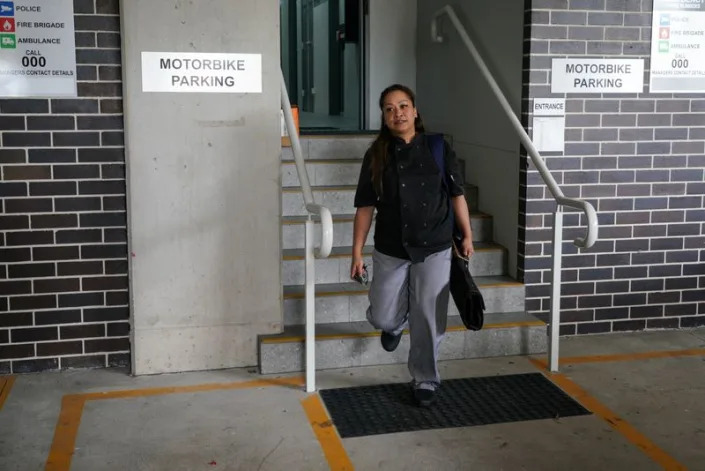Opinion by Alan Brownstein, opinion contributor • Yesterday - The Hill
For many business leaders, corporate norms today have expanded beyond the focus on maximizing shareholder value to take into account the broader needs of the community — what is colloquially described as environmental, social and governance (ESG) issues.

Yet ESG is also regularly condemned today, primarily by conservative critics, as wrongheaded and inappropriate manifestations of “Woke” ideology. Republicans in Congress and in state governments plan to challenge private sector companies for their support of ESG policies.
The thrust of the criticism is that for-profit, commercial corporations should base their decisions solely on conventional business concerns — that is, interests that further the purpose of making money for the enterprise. Decisions grounded in environmental values or the betterment of society or programs designed to bring marginalized groups into the company and create a workplace environment where they can thrive are problematic distractions at best. To ESG critics, these are costly, misguided distortions of the profit maximizing free enterprise system.
The focus of these challenges to allegedly “Woke”-influenced decision making are secular values or at least values that are expressed in secular terms.
But what if the ESG concerns are grounded in religious beliefs? Should religious values justify deviations from profit-making goals while secular values, however sincerely motivated, should not?
Assume for a moment that the environmental component (the E of ESG) is grounded upon an asserted religious obligation imposed by God for humanity to care for the earth. As the Pew Research Center reports, “Most U.S. adults — including a solid majority of Christians and large numbers of people who identify with other religious traditions — consider the Earth sacred and believe God gave humans a duty to care for it.” Is it improper for a company to take that faith-based obligation seriously? Must for-profit companies ignore what God requires?
Consider also another religious understanding of ESG. May a company communicate religious messages with the distribution of its goods and services — expressing “Merry Christmas” on cups or prayers on napkins with meals — only if it concludes that doing so will improve the bottom line? Or may these messages be offered for spiritual reasons and for the betterment of society?
The Supreme Court’s analysis in Burwell v. Hobby Lobby Stores (2014) provides some partial guidance on this question. At the time of the lawsuit, Hobby Lobby was a very large, closely held corporation of over 500 stores with 13,000 employees. The owners claimed that a federal regulation requiring them to provide health insurance coverage for medical contraceptives for their employees interfered with their religious beliefs and, accordingly, violated their rights under the Religious Freedom Restoration Act of 1993 (RFRA). The court ruled in favor of Hobby Lobby, a result generally applauded by conservatives. (For the record, I thought the court’s ultimate judgment in Hobby Lobby was correct, although I also thought the majority opinion was badly reasoned and poorly drafted.)
In order to reach its conclusion, the court had to address two basic questions. First, should religious beliefs be recognized as controlling the decisions of a for-profit commercial enterprise and protected as such? The court answered that question in the affirmative. Second, should Hobby Lobby’s status as a corporation undermine its religious liberty claim? Here the court rejected the idea that corporations could not hold and act on religious beliefs and be protected in doing so. Put simply, a for-profit corporation could make decisions based on religious values. The impact of the decision on the profitability of the business was largely beside the point.
To be fair, the fact that Hobby Lobby was a closely held corporation controlled by a family and not a publicly traded corporation made this an easier case for the court to resolve in its favor. And the court acknowledged the practical difficulty of determining the religious commitments of a publicly traded company. But as a conceptual matter, there didn’t seem to be anything inconsistent or inappropriate about a company’s decision makers being influenced or controlled by religious beliefs divorced from profit making concerns.
To be clear here, I am not suggesting that secular beliefs are protected under religious liberty statutes like RFRA. My question is whether we can justify moral and political opposition to ESG grounded in secular values while supporting and even protecting ESG based on religious beliefs.
Without a clear answer to that question, contemporary critics of ESG are vulnerable to the challenge that they accept religiously based ESG, but reject its secular counterpart — not because they think company decisions must focus exclusively on profits, but because certain religious beliefs comport with their political ideology and secular values do not.
Alan Brownstein is a professor of law emeritus at the University of California, Davis School of Law. He has written numerous articles for academic journals and opinion pieces for other media on a range of constitutional law subjects. He is a member of the American Law Institute and served on the Legal Committee of the Northern California American Civil Liberties Union. He received his B.A. degree from Antioch College and earned his J.D. (magna cum laude) from Harvard Law School, where he served as a Case Editor of the Harvard Law Review.























